34 Bacon and Cabbage
Posted by Christine on Feb 10, 2015 in Ireland | 3 comments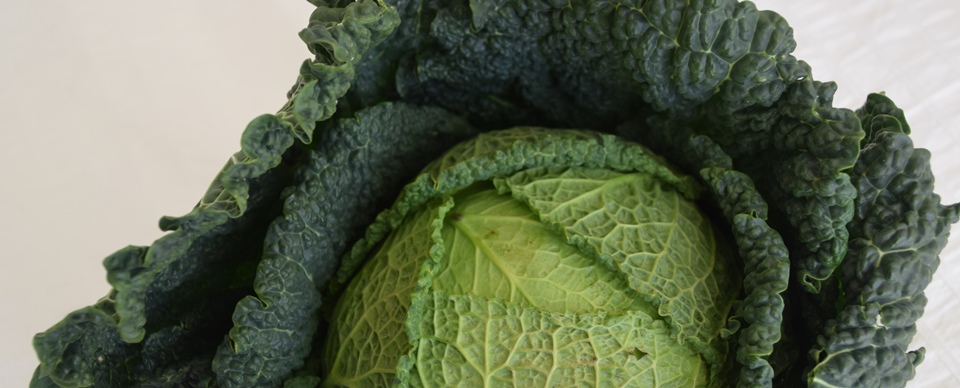
For tourists, the most readily identifiable “Irish” food is Irish stew, a concoction of lamb, potatoes, carrots, and onions that is available in most food pubs, many restaurants, and also served at home. A less well-known but even more homey dish is bacon and cabbage, always accompanied by “floury” potatoes (boiled, mashed, or both), and topped off with parsley sauce, the final touch that gives this ubiquitous plateful its most irresistible quality.
Simple to make, inexpensive, durable in the fridge if you can’t eat all of it in one night, and a very satisfying combination of flavors, bacon and cabbage is the national dish of Ireland—true Irish soul food. I’ve had bacon and cabbage in homes and at restaurants, and it’s always fun to see how excited people get about this comfort food, a reaction I soon picked up.
Bacon and cabbage is not to be confused with the Irish-American specialty, corned beef and cabbage, though the two have common roots. During the nineteenth century and the height of Irish immigration to the US, “corned” or salt-cured beef was widely available on the east coast, and with its ham-like taste, probably seemed like an economical and, because it came in tins, convenient stand-in for pork from the butcher when preparing bacon and cabbage. Some restaurants here in Ireland advertise “traditional corned beef and cabbage,” but they are aiming to lure the Irish-American contingent. I love corned beef and cabbage, but I also love the Irish original. “Bacon and cabbage” or sometimes “ham and cabbage” are the words to look for on a menu, and like Irish stew, you’ll find this dish on many pub and family restaurant menus, and in its “sourced” versions, even at fancier places.
Pork has played an important role in the Irish diet probably since human habitation of the island began: the ecosystem favored the flourishing of wild boar in thick forests with few predators. Though deforestation under English rule from 1500 to 1800 (the navy needed ships) significantly shrank the boar population, domestic pig farming had already become part of the economy. Pork has almost always been easy to get and relatively cheap here, and today is the third largest farm industry after beef and dairy. As exports, Irish pork products such as sausages are very much in demand, especially in the UK.
“Bacon” is a more complicated term here than in the US. An Irish breakfast includes “rashers” or pieces taken from the back or loin of the pig. In taste and texture they resemble what Americans know as Canadian bacon (and confusingly, what the Canadians call “peameal”): lean, sliced thin, and shaped a bit like pork chops. What Americans call “bacon” is taken from the belly and fattier; here that cut is called “streaky bacon” here is used in various recipes but not generally served by itself. In Ireland the word “bacon” refers to a thick piece of pork (see photo above right) from the shoulder or back, often labelled “boiling bacon” in shops. All of these terms refer, of course, to cured pork.
Genetically related to broccoli, cauliflower, and Brussel sprouts, cabbages have been with us a long time and were used in Antiquity for medicinal purposes as well for food. A staple of the medieval European diet, cabbages even appear in illuminated manuscripts, but they may have arrived late in Ireland. The hated Oliver Cromwell apparently brought cabbages along with marauding armies to Ireland during the Eleven Years’ War. Starting in 1649, Cromwell’s soldiers grew them on a patch of land near St. Patrick’s Cathedral.
Though bacon and cabbage can be made with any type of cabbage, the standard and the best choice is savoy cabbage (see photo at top), a dark, curly leafed variety that was developed in Germany and is very flavorful. Savoy cabbage is a study and durable vegetable. I know this from growing them in Atlanta. Recognizing that some part of any crop is usually lost to insects, weather, or animals, I planted quite a few savoy cabbages in my winter garden two years ago. Amid the chard, Brussel sprouts, garlic, onions, etc., the cabbage were the stalwarts of the garden, bursting from the ground and seeming to grow before my eyes with or without my tending. When the Brussel sprouts petered out unexplainedly and rabbits devoured all my chard overnight, the cabbages soldiered on. Even a person with a love for Ireland can only cook so much cabbage, and we had to give a lot of the gigantic heads away.
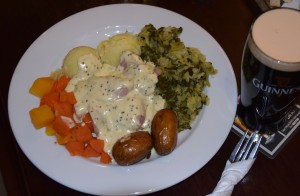
“Healy’s Irish Honey and Mustard Glazed Bradley Meats Loin of Bacon, Champ Mash, Green Cabbage and a Parsley Whole Grain Mustard Sauce,” at Madigan’s Pub on Abbey Street
Potatoes don’t figure in the title of the bacon and cabbage, but they are just as important to the concept and perhaps unnamed only because they are such an obvious component, integral to the Irish diet since they were introduced, probably by explorers returning from South America in the late 1500s, though popular myth has Sir Walter Scott planting them for the first time in the garden of his home at Youghal, County Cork. “Floury” may sound unappetizing, but in this context it refers to potato varieties that turn out soft and fluffy when cooked and are ideal for mashed potatoes or chips: Rooster, Kerr’s Pink, and especially Golden Wonder are considered the “flouriest” and best varieties. Potatoes to accompany bacon and cabbage can be mashed or boiled, or both. I know I’m really in Ireland when I order a meal and it comes with both boiled and mashed potatoes. “Champ”—potatoes mashed with spring onions, butter, and cream—make a very nice addition to the salty, vegetable-y taste of bacon and cabbage.
This is a boiled dinner and so was easily made in the past with a simple fire or burner and a pot with a lid. You can find lots of recipes online, and they’re all pretty much the same with many variations to choose from. The bacon or ham is covered with water and simmered for about 40 to 90 minutes depending on the size. Some people soak the meat in cold water overnight before boiling it in fresh water. When there’s about twenty minutes more cooking time, add the cabbage wedges to the pot so they can soak up the flavor from the meat. That’s the basic method, the no frills but very satisfying dish so many Irish people grew up eating. Today, celery, onion, carrots, leeks, peppercorn, and bay leaf or any combination of those ingredients are sometimes added to the pot, and it’s common to chop the cabbage more finely and sauté it in a separate pan with butter and a little of the bacon broth.
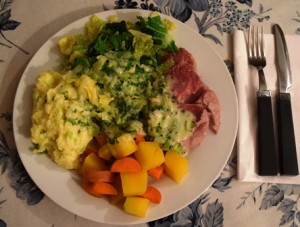
My version of bacon and cabbage with carrots and rutabaga (or “swede” as rutabaga is called in Ireland) and champ made with Rooster potatoes
Bacon and cabbage can be accompanied by mustard, mustard sauce, or steak sauce, but I think that parsley sauce—sometimes rather over cutely called shamrock sauce just because of the green sprigs in it—really makes the dish. Parsley sauce is your standard white sauce: a butter and flour roux with heated broth (from the bacon) or milk (or a combination) added slowly and salt, pepper, and lots of chopped parsley and a few tablespoons of cream stirred in at the end. There are lots of variations on the sauce, too, but those are the essential ingredients. Because I love anything with leeks in it, I like Donal Skehan’s version that brings together the best of both camps—mustard sauce and parsley sauce—together with sautéed leeks in one recipe.
I’m not the cook in the family, but with its basic ingredients, simple methods, and comforting array of flavors, this is a dish even I can make come out perfect.

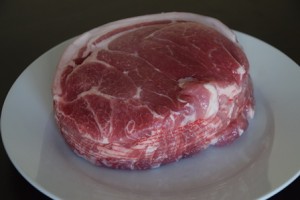
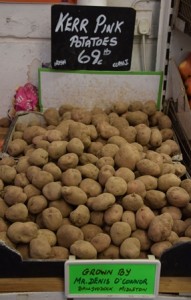
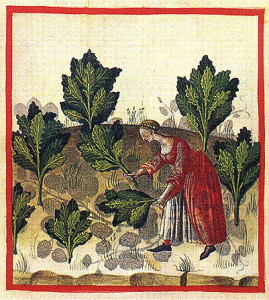
I’ve never been a fan of cabbage but this sounds delicious. I may have to try making it.
This entire blog series has been great, but this post is clearly of critical importance and excellence. The research must have been taxing.
Tom and Rosemary, you’ll have to assist me in further research. It is indeed taxing, but someone’s gotta do it. Thanks for reading!